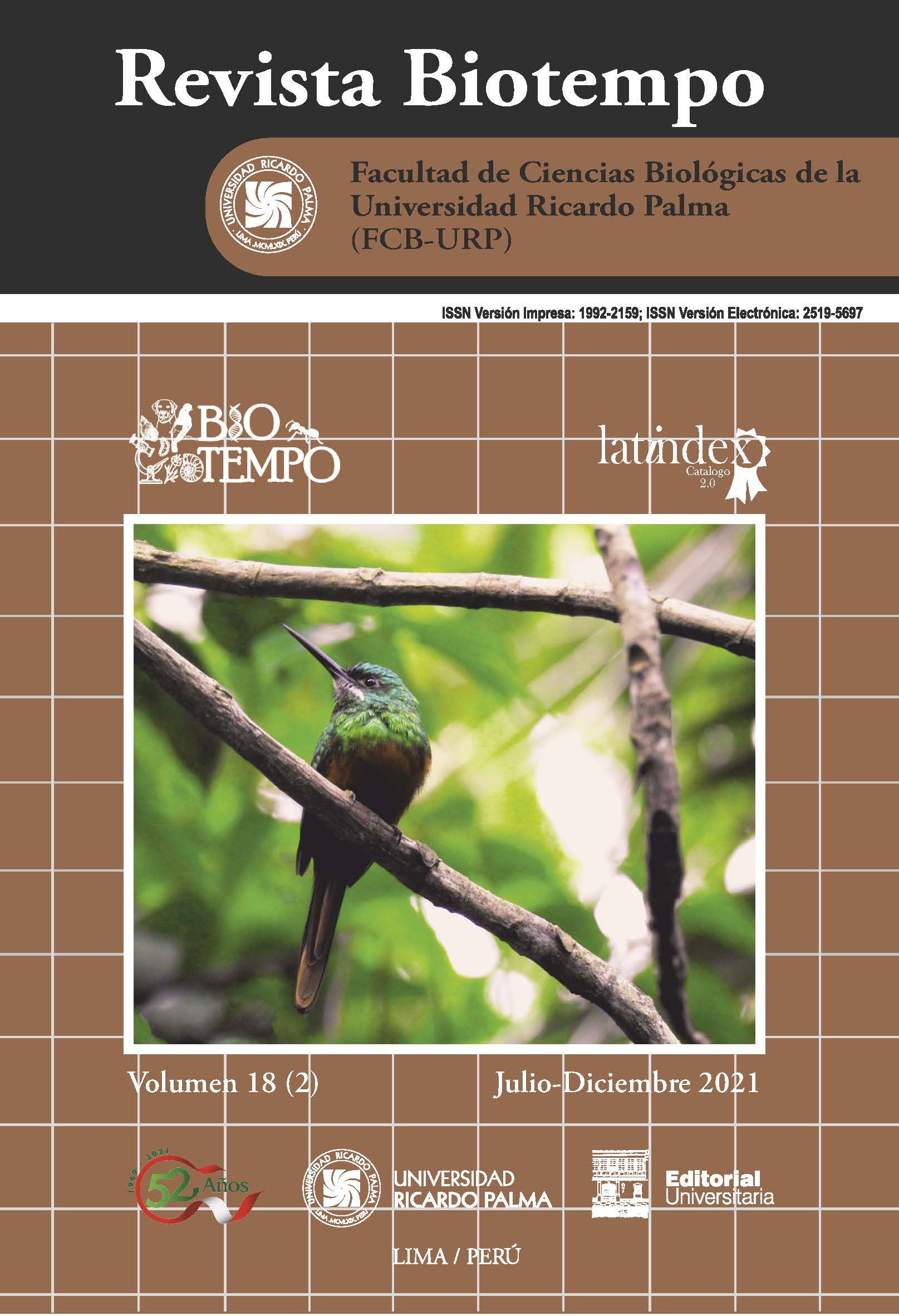ZOOPLANKTON REGISTERED IN THE SURROUNDINGS OF THE ALBACORA MARINE PLATFORM IN THE PROVINCE OF TUMBES, REGIÓN TUMBES, PERÚ
DOI:
https://doi.org/10.31381/biotempo.v18i2.4344Keywords:
Albacora Platform, copepods, environmental variables, euphausiids, zooplanktonAbstract
Oil activities are developed on the coast of the department of Tumbes, Peru, which coexist with the coastal marine ecosystem. It is possible that this activity could generate pollution in the habitat of some species and cause changes in the marine ecosystem. Th erefore, the present investigation focuses mainly on zooplankton. Within these organisms, there are two important groups: Copepods and euphausiids. During 2014, according to Peruvian law (DS N ° 039- 2014-EM) in the surroundings of the Albacora Platform, marine monitoring was carried out on board an artisanal vessel and zooplankton samples were taken according to standardized protocol. Th e analysis in the laboratory was qualitative and quantitative. Tables and fi gures were prepared in Excel and Rstudio programs. Th e results indicated a record of 21 taxonomic groups, the copepods being the most abundant with the species Paracalanus parvus (Claus, 1863), Centropages furcatus (Dana, 1849), Acartia danae (Giesbrecht, 1889) and Acartia tonsa (Dana, 1849). Th e euphausiids are a group of great importance that recorded Euphausia (Dana, 1850) in their larval stages: caliptopis and furcilia, and Euphausia lamelligra (Hansen, 1911). In conclusion, the biological diversity indices showed a high diversity of species in all the sampling stations around the Albacora platform during 2014, directly related to the environmental parameters of temperature and salinity.










